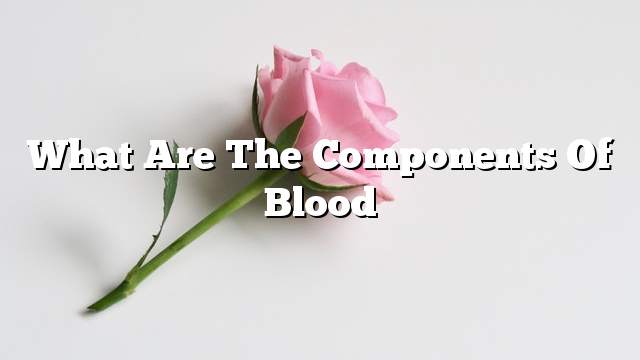Blood is the red fluid that flows in the body and forms 8% of the human body’s weight and is equivalent to four to six liters of blood. This essential fluid carries out the critical tasks of transporting oxygen and nutrients to body cells, eliminating carbon dioxide, ammonia, waste and other products. In addition it plays a vital role in our immune system and maintain relatively constant body temperature. Blood consists of four essential elements of four thousand components of blood, the most important of which are red blood cells, white cells, platelets and plasma.
Red blood cells are relatively large microscopic cells without nuclei, which are similar to the primitive nuclei of bacteria. Red blood cells usually form 40-50% of the total blood volume. The function of red blood cells is to transfer oxygen from the lungs to all living tissues of the body and carry away carbon dioxide. Red blood cells are produced in the bone marrow constantly from stem cells at a rate of about 2-3 million cells per second. Hemoglobin, which is responsible for the transport of protein molecule gas, accounts for 95% of red cells. Each red cell has iron-rich hemoglobin molecules, and people with anemia generally have a lack of red blood cells and therefore feel tired due to hypoxia. Due primarily to the red blood cells oxygen red color of blood. Human embryonic hemoglobin molecules differ from those produced by adults in a number of amino acid chains.
White blood cells are present in varying numbers and types but a very small fraction of the blood volume is usually only about 1% in healthy people. The white blood cells are not just blood. But occur elsewhere in the body as well, especially in the glands of the spleen, liver and glands. Most of them are produced in the bone marrow of the same type of stem cells that produce red blood cells. They are also produced in the thymus at the base of the neck. White blood cells (Lymphocytes) are the first line of defense in the body’s immune system. They act to identify and bind a strange protein to bacteria, viruses and fungi so that they can be removed and then it reaches to encircle and destroy alien cells, get rid of dead or dying blood cells as well as substances Exotic such as dust and asbestos.
Are parts of the cells without the nucleus that work with the chemicals on the blood clot at the site of the wounds by adhering to the walls of the blood vessels, thus connecting the rupture of the wall of the blood vessels. Platelets are not as effective in blood clotting throughout the day. The circadian rhythm system (the internal biological clock) causes peak platelet activity in the morning and this is one of the main causes of stroke and the most common heart attacks in the morning.
Blood plasma is yellow water, a transparent medium that acts as a medium to transport and carry sugar, fat, protein, salt to cells of the body, carrying red blood cells, white blood cells, and platelets. Plasma also works to remove waste from metabolism. The plasma also contains blood clotting agents, sugars, fats, vitamins, minerals, hormones, enzymes, antibodies, and other proteins
